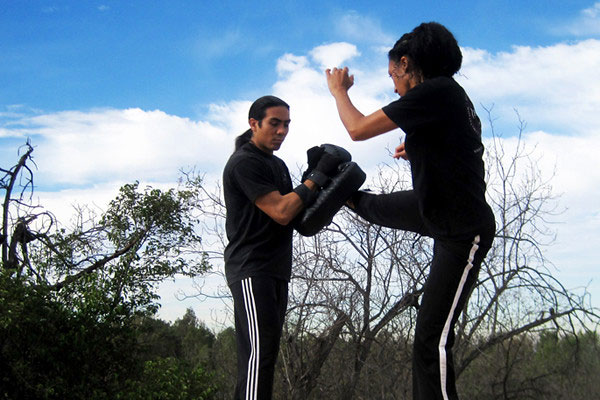Martial Arts Near Me
Jeet Kune Do
Jeet Kune Do, which translates to "Way of the Intercepting Fist," is a martial art and philosophy developed by the legendary Bruce Lee in the mid-20th century. Considered a revolutionary approach to combat, Jeet Kune Do's principles and techniques challenged traditional martial arts, emphasizing efficiency, simplicity, and practicality. This essay offers a comprehensive exploration of Jeet Kune Do, delving into its historical origins, core techniques, and its current status in the world of martial arts.
Bruce Lee's journey as a martial artist began in his childhood, studying Wing Chun under renowned instructor Yip Man in Hong Kong. However, as Lee's martial arts journey progressed, he began to question the rigid and stylized nature of traditional martial arts. This dissatisfaction led him to embark on a quest for a more fluid, adaptive, and personal martial arts expression.
Lee's search for a new martial arts philosophy came to fruition when he introduced the concept of Jeet Kune Do in the 1960s. It represented a radical departure from the well-established structures and conventions of traditional martial arts. Lee sought to break free from style-specific limitations and create a system that focused on the individual, blending various martial arts styles, including Wing Chun, Western boxing, fencing, and even elements of philosophy, psychology, and biomechanics.

Jeet Kune Do embodies the concept of intercepting the opponent's attack while simultaneously launching a counter-attack. Its techniques revolve around speed, economy of motion, precision, and adaptability, enabling practitioners to respond effectively to any situation. Here are some of the core techniques of Jeet Kune Do:
1. Fist Intercepting Techniques: Jeet Kune Do emphasizes the use of straight punches, employing energy-efficient movements to strike vital targets. Lee incorporated elements of Wing Chun's straight blast and linear footwork, enabling practitioners to execute lightning-fast and powerful punches.
2. Kicking Techniques: Lee's kicking techniques focused on speed, precision, and effectiveness rather than flashy acrobatics. Kicks focused on the lower-body targeting vital areas using straight kicks, hook kicks, roundhouse kicks, and front kicks.
3. Trapping and Grappling: Jeet Kune Do borrowed principles from Wing Chun and introduced trapping techniques to control the opponent's arms, disrupting their balance and opening them up for further attack. Additionally, grappling and locking techniques were incorporated for close-quarters combat, emphasizing efficiency and speed.
4. Explosive Footwork: Footwork is one of the fundamental aspects of Jeet Kune Do. It emphasizes constant movement, speed, and the ability to cut angles swiftly. Lee's famous "five ways of attack" technique focused on evading, intercepting, foot maneuvers, body shifting, and body unity.
Jeet Kune Do has significantly influenced the world of martial arts, both in its philosophical teachings and practical application. While Bruce Lee was its primary exponent, he generously shared his knowledge, enabling practitioners worldwide to follow in his footsteps. Today, Jeet Kune Do has evolved and expanded, with numerous schools and instructors teaching its principles and techniques.
One of the notable figures carrying the Jeet Kune Do legacy forward is Lee's protégé, Dan Inosanto. Inosanto has been instrumental in preserving Jeet Kune Do and propagating its concepts, techniques, and philosophy. He has expanded on Lee's work, incorporating Filipino martial arts, Brazilian Jiu-Jitsu, and various other disciplines into the training.
The principles of Jeet Kune Do have also made their way into other martial arts systems and training methodologies. Its emphasis on adaptability and personal expression has influenced MMA (Mixed Martial Arts) fighters, who combine different martial arts styles to create an effective fighting system. Many MMA fighters, such as Anderson Silva and Conor McGregor, credit Jeet Kune Do as a significant influence on their fighting styles.
Despite its impact, Jeet Kune Do remains a niche art compared to more established martial arts such as Karate, Taekwondo, and Brazilian Jiu-Jitsu. Nonetheless, its impact and relevance can be seen in movies, pop culture, and the continued interest of martial arts enthusiasts around the world. Jeet Kune Do continues to attract individuals seeking an eclectic and adaptable martial arts philosophy that encourages self-expression and personal growth.
Jeet Kune Do, the brainchild of Bruce Lee, revolutionized the martial arts landscape. Breaking away from traditions and fixed styles, Jeet Kune Do introduced a philosophy that emphasized practicality, adaptability, and the individual's expression. It honed the art of intercepting attacks while launching precise and powerful counter-attacks. Today, Jeet Kune Do continues to inspire martial artists, enabling them to cultivate a deeper understanding of combat and themselves. As Bruce Lee famously stated, "Be like water, my friend," reminding students of Jeet Kune Do to remain fluid, resilient, and open to personal growth.